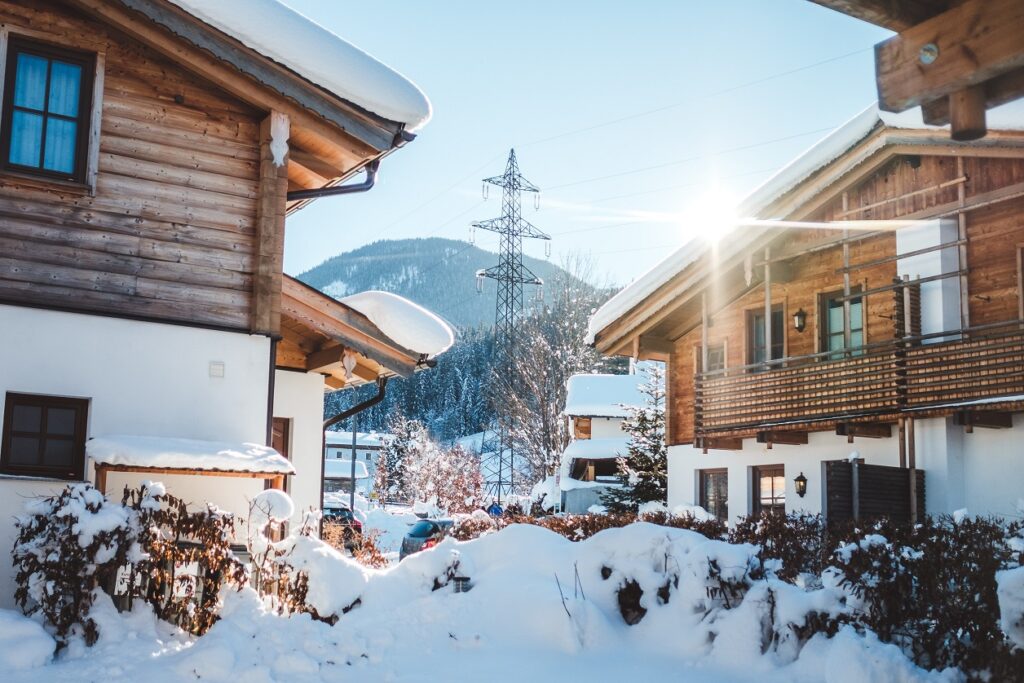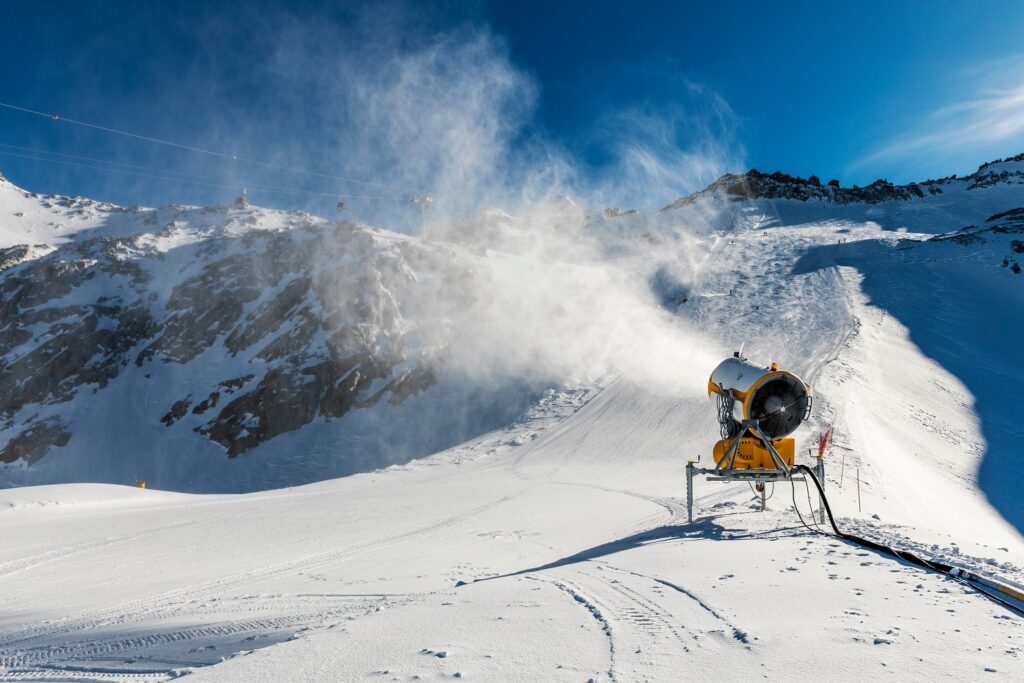People fly across states—even countries and sometimes continents—to buckle on heavy-duty boots, hitch skis or snowboards over their shoulders, and catch lifts up snow-covered mountains—despite the high environmental cost of such winter vacations on the mountains themselves.
Although most of us would rather not think about it, ski resorts, which provide the infrastructure for approximately 400 million visitors each year, are under threat. Our current model of accessing and using them is not sustainable. With the continued expansion of resort towns comes an ever-increasing carbon footprint, due to such factors as the electricity used to heat buildings or the fuel required to groom slopes.

Some companies that own ski resorts, like Domaines Skiable de France, have committed to achieving net zero emissions in the next few decades. Others have committed to simply adopting more eco-friendly policies and reducing their energy consumption; this list includes Alterra Mountain Company (Mammoth & Steamboat), Vail Resorts (Vail, Park City, Beaver Creek, & Whistler), Boyne Resorts (Big Sky), and POWDR (Snowbird).
Aspen Skiing Company has helped pioneer LEED-certified buildings and innovative electricity generators to reduce their environmental impact, and they serve as a model for other ski resorts following suit. However, like all resorts and resort operators, they cannot control global warming at large; since the 1980s, their skiing season has already been reduced by an entire month. The question is now not if mountain ranges and ski resorts will lose their snow, but when. For instance, the highly popular Mammoth Mountain Ski Area has been ranked among the top ten resorts most vulnerable to climate change.

Fake snow on warmer days is a debatable remedy, particularly when water sources are not readily available. The manufactured white fluff that sprays out of snow cannons is often only a band-aid solution that resorts implement to keep their ticket sales high in the face of global warming. However, technology to produce fake snow is improving, making them more eco-friendly. An estimated 87% of resorts now use artificial snow to supplement that which is already on runs and to build special features like jumps.
Beyond energy-efficient buildings and fake snow, political action and advocacy work are options available to ski resorts and the individuals who are patrons of them. Sustainability directors and climate experts agree that the actions of one resort alone will not change the future of our mountainous escapes. We must work together to cultivate an industry that can serve us year after year. You can learn more on Aspen Snowmass’s website here.
 Food
Food Farmers
Farmers Sustainable Living
Sustainable Living Living Planet
Living Planet News
News